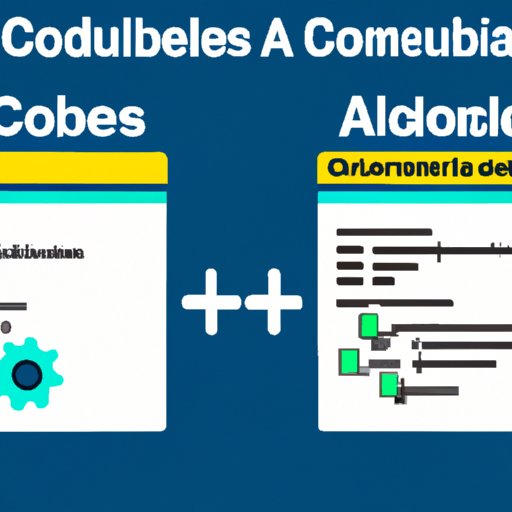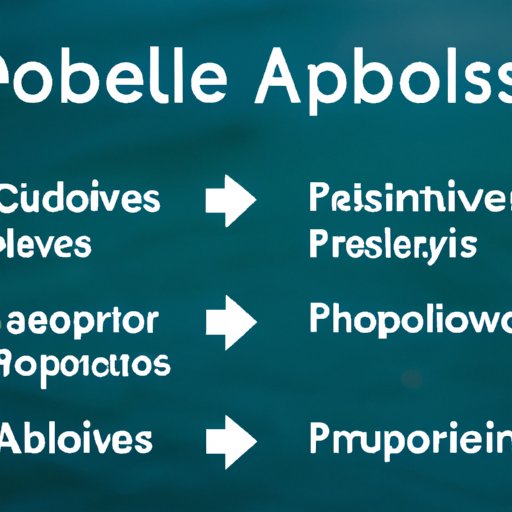Introduction
In an increasingly digital world, automation has become an essential tool for businesses of all sizes. Automation can help to streamline processes, reduce costs, and improve efficiency, but it often comes with a steep learning curve and requires specialized knowledge. Codeless automation is a powerful solution that eliminates the need for coding and makes automation more accessible to businesses of all kinds.

Exploring the Benefits of Codeless Automation
Codeless automation offers a variety of benefits for businesses. Here are some of the key advantages:
Increased Efficiency
Codeless automation helps to streamline processes by automating manual tasks. This can significantly reduce the amount of time spent on mundane tasks and free up resources to focus on other areas. According to a study by McKinsey, “automation could raise productivity growth globally by 0.8 to 1.4 percent annually.”
Reduced Costs
Automation can also help to reduce costs. By eliminating the need for manual labor, businesses can save money on labor costs and reallocate their resources to more important areas. Additionally, codeless automation helps to reduce errors, which can further reduce costs associated with correcting mistakes.
Improved Accuracy
Codeless automation helps to reduce errors and ensure accurate data. Automated systems are able to check for errors and inconsistencies in data, ensuring that the process is completed correctly and efficiently. This can be especially beneficial for businesses that rely heavily on accurate data, such as financial organizations.
Enhanced Scalability
Codeless automation also helps to enhance scalability. Automated systems can easily be scaled up or down to meet changing needs, making them ideal for businesses that experience fluctuating demand. Additionally, automated systems can be used to integrate different parts of a business, improving communication and collaboration.

An Introduction to Codeless Automation
Now that you know some of the benefits of codeless automation, let’s take a closer look at what it is and how it works.
What is Codeless Automation?
Codeless automation is a type of automation that does not require coding. Instead, it relies on graphical user interfaces (GUIs) to create automated processes. Using a point-and-click system, users are able to visually create workflows and configure automated processes without having to write any code.
Types of Codeless Automation
There are several types of codeless automation available. These include software robots, robotic process automation (RPA), and visual programming. Each type has its own unique features and benefits, so it’s important to do your research before deciding which one is right for your business.
A Guide to Getting Started with Codeless Automation
Now that you know what codeless automation is, let’s take a look at how to get started. Here are some tips for getting started with codeless automation:
Preparing Your System
Before you start using codeless automation, it’s important to prepare your system. Make sure that your hardware and software are up to date and that you have a reliable internet connection. Additionally, you should make sure that your system is secure and protected from potential threats.
Choosing a Platform
Once your system is prepared, it’s time to choose a platform. There are a variety of codeless automation platforms available and each one has its own unique features and benefits. Do your research and find the one that best meets your needs.
Implementing Automation
Once you’ve chosen a platform, it’s time to implement automation. Start by creating a workflow using the platform’s GUI. Then, configure the workflow to automate the desired process. Finally, test the workflow to make sure that everything is working properly.

How to Use Codeless Automation to Streamline Business Processes
Now that you know how to get started with codeless automation, let’s take a look at how to use it to streamline business processes. Here are some tips for using codeless automation to optimize business processes:
Identifying Areas for Automation
The first step is to identify areas where codeless automation can be used to streamline processes. Take a look at your current processes and determine which ones can be automated. Focus on processes that are time consuming or prone to errors, as these are likely to be the most beneficial areas to automate.
Setting Up Automated Workflows
Once you’ve identified areas for automation, it’s time to set up automated workflows. Using the platform’s GUI, create a workflow that automates the desired process. Be sure to test the workflow to make sure that it is functioning correctly.
Optimizing Automated Workflows
Finally, it’s important to optimize automated workflows. Monitor the performance of the automated workflow and make adjustments as necessary. Additionally, look for ways to improve efficiency and reduce errors. With regular optimization, you can ensure that your automated workflows are running smoothly and effectively.
The Advantages of Codeless Automation for Businesses
Codeless automation offers a variety of advantages for businesses. Here are some of the key benefits:
Improved Productivity
Codeless automation helps to streamline processes and reduce the amount of time spent on mundane tasks. This can result in improved productivity and allow businesses to focus on more important areas. According to a study by Deloitte, “businesses that adopted automation saw an average increase of 10 percent in productivity.”
More Flexible Solutions
Codeless automation also offers more flexible solutions. Automated systems can be easily scaled up or down to meet changing needs, making them ideal for businesses that experience fluctuating demand. Additionally, automated systems can be easily updated to incorporate new features and functionality.
Lower Risk of Errors
Finally, codeless automation helps to reduce the risk of errors. Automated systems are able to check for errors and inconsistencies in data, ensuring that the process is completed correctly and efficiently. This can be especially beneficial for businesses that rely heavily on accurate data.
Conclusion
Codeless automation is a powerful tool for businesses looking to streamline processes, reduce costs, and improve efficiency. It offers a variety of benefits, including increased efficiency, reduced costs, improved accuracy, and enhanced scalability. Additionally, codeless automation is easy to use and does not require coding. For businesses looking to get started with automation, codeless automation is a great option.
To summarize, codeless automation is a powerful tool for businesses looking to streamline processes, reduce costs, and improve efficiency. It offers a variety of benefits, including increased efficiency, reduced costs, improved accuracy, and enhanced scalability. Additionally, codeless automation is easy to use and does not require coding. For businesses looking to get started with automation, codeless automation is a great option.
Final Thoughts
Codeless automation is a powerful tool for businesses looking to streamline processes and reduce costs. It offers a variety of benefits and can be used to automate a wide range of tasks. With the right platform and implementation, codeless automation can be a powerful tool for businesses of all sizes.
(Note: Is this article not meeting your expectations? Do you have knowledge or insights to share? Unlock new opportunities and expand your reach by joining our authors team. Click Registration to join us and share your expertise with our readers.)
